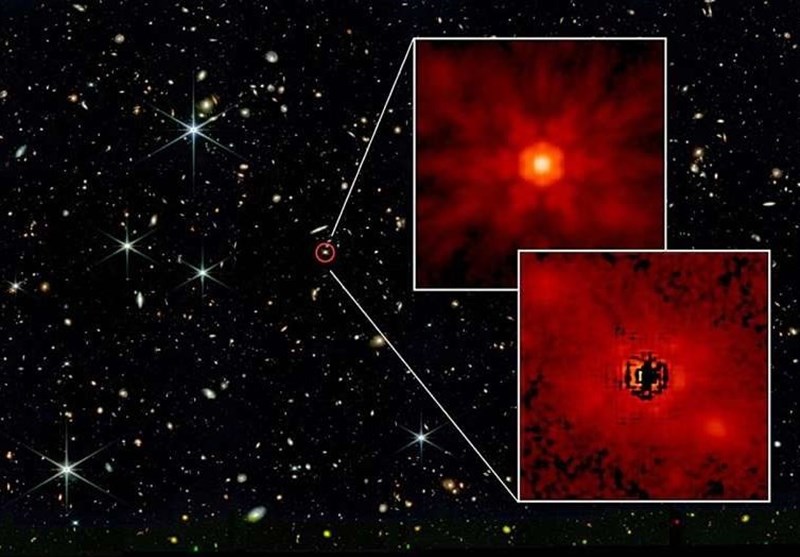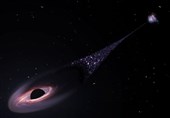Early Supermassive Black Holes Linked to Dark Matter, New Study Suggests
TEHRAN (Tasnim) – Astrophysicists from UCLA propose a dark matter-driven mechanism that could explain the formation of supermassive black holes in the early universe, long before conventional theories suggest they should have existed.
Supermassive black holes, like the one at the center of our Milky Way galaxy, typically take billions of years to form. The process starts when a giant star, at least 50 times the mass of our sun, burns out and its core collapses into a black hole. Even so, these black holes usually only reach around 10 solar masses, far from the 4 million-solar-mass black hole, Sagittarius A, in our Milky Way or the billion-solar-mass behemoths found in other galaxies. These colossal black holes grow over time through the accretion of gas, stars, and mergers with other black holes.
However, recent discoveries by the James Webb Space Telescope have puzzled scientists by revealing supermassive black holes that existed shortly after the universe began, much earlier than current models predict. According to UCLA astrophysicists, this anomaly could be due to dark matter's role in preventing hydrogen from cooling too quickly, allowing gravity to condense it into massive clouds that formed black holes rather than stars. This research was published in Physical Review Letters.
"How surprising it has been to find a supermassive black hole with a billion solar mass when the universe itself is only half a billion years old," remarked Alexander Kusenko, a professor of physics and astronomy at UCLA and the study's senior author. "It's like finding a modern car among dinosaur bones and wondering who built that car in prehistoric times."
Some theories have suggested that a massive gas cloud could collapse directly into a supermassive black hole, bypassing the usual process of stellar evolution, accretion, and mergers. Yet, gravity tends to gather gas into smaller halos rather than forming one large cloud, primarily because the gas cools too quickly. When gas remains hot, its pressure counteracts gravity, but rapid cooling causes fragmentation, leading to the formation of smaller objects.
Yifan Lu, the study's first author and a doctoral student, explained that molecular hydrogen plays a crucial role in cooling. Hydrogen molecules become cooling agents by absorbing thermal energy and radiating it away. In the early universe, high levels of molecular hydrogen led to rapid cooling and the formation of smaller halos.
To address this, Lu and postdoctoral researcher Zachary Picker developed simulations that showed additional radiation could heat the gas and dissociate hydrogen molecules, preventing the cooling that leads to fragmentation. "If you add radiation in a certain energy range, it destroys molecular hydrogen and creates conditions that prevent fragmentation of large clouds," Lu noted.
This raises the question: where does the radiation come from? Dark matter, which constitutes the vast majority of matter in the universe, may hold the answer. Though its exact nature remains unknown, dark matter could include unstable particles that decay into photons, providing the necessary radiation to prevent cooling and allow the formation of large clouds that collapse into supermassive black holes.
Picker highlighted the significance of this discovery, stating, "This could be the solution to why supermassive black holes are found very early on. If you're optimistic, you could also read this as positive evidence for one kind of dark matter."
The study suggests that even mild decay of dark matter particles could produce enough radiation to stop hydrogen clouds from cooling too quickly, enabling the formation of supermassive black holes in the early universe.






